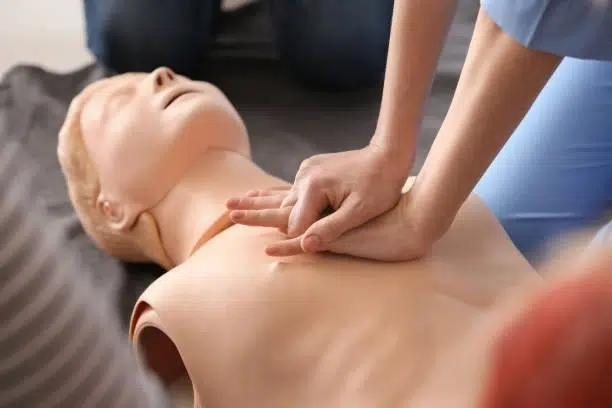
In the face of a cardiac emergency, knowing how to react quickly can make all the difference. Two crucial certifications offered by the American Heart Association (AHA) equip individuals with the skills to intervene during these critical moments: AHA Basic Life Support (BLS) and AHA CPR. While both programs focus on life-saving techniques, they cater to different audiences and offer varying levels of training. This article delves into the specifics of AHA BLS and AHA CPR, highlighting their key differences and helping you determine which certification might be right for you.
AHA CPR stands for Cardiopulmonary Resuscitation. It is a lifesaving skill that focuses on manually restarting the heart and lungs of an unconscious person who has gone into cardiac arrest. AHA CPR training equips individuals with the knowledge and ability to:
AHA CPR certification is designed for the general public and is an excellent option for anyone who wants to be prepared to respond to a cardiac emergency. Many workplaces, schools, and community organizations encourage or even require CPR certification for their staff and members. The skills learned in AHA CPR can be lifesaving in a variety of settings, from homes and workplaces to public spaces and recreational areas.
AHA Basic Life Support (BLS) builds upon the foundation of CPR and provides a more comprehensive approach to managing victims of cardiac arrest, respiratory emergencies, and choking. This in-depth training program is specifically designed for healthcare providers and first responders, including:
AHA BLS certification equips individuals with the skills covered in AHA CPR, along with additional knowledge and techniques, such as:
The broader scope of AHA BLS makes it a vital certification for healthcare professionals and first responders who are on the front lines of emergency situations. Their advanced training allows them to provide a higher level of care until advanced medical support arrives.
While both AHA BLS and AHA CPR focus on lifesaving interventions, some key differences distinguish them:
The choice between AHA BLS and AHA CPR depends on your individual needs and goals. Here’s a breakdown to help you decide:
Some individuals may benefit from obtaining both AHA CPR and AHA BLS certifications. Here are some scenarios:
Regardless of whether you choose AHA CPR or AHA BLS, both certifications offer significant benefits:
Once you’ve decided which certification is right for you, the next step is to find a reputable AHA training center. Here are some tips for choosing a course:
By following these tips, you can ensure you select a high-quality AHA training course that equips you with the necessary skills and knowledge to respond effectively in an emergency situation.
AHA CPR and AHA BLS are both valuable certifications that empower individuals to intervene during critical moments. Understanding the key differences between these programs allows you to choose the one that best aligns with your needs and goals. Whether you’re a member of the general public or a healthcare professional, investing in these certifications can equip you with the lifesaving skills to make a difference in an emergency.

Proud to be an American Heart Association Training Site aligned with GoRescue Birmingham, AL
Copyright 2025© CPR Classes Near Me